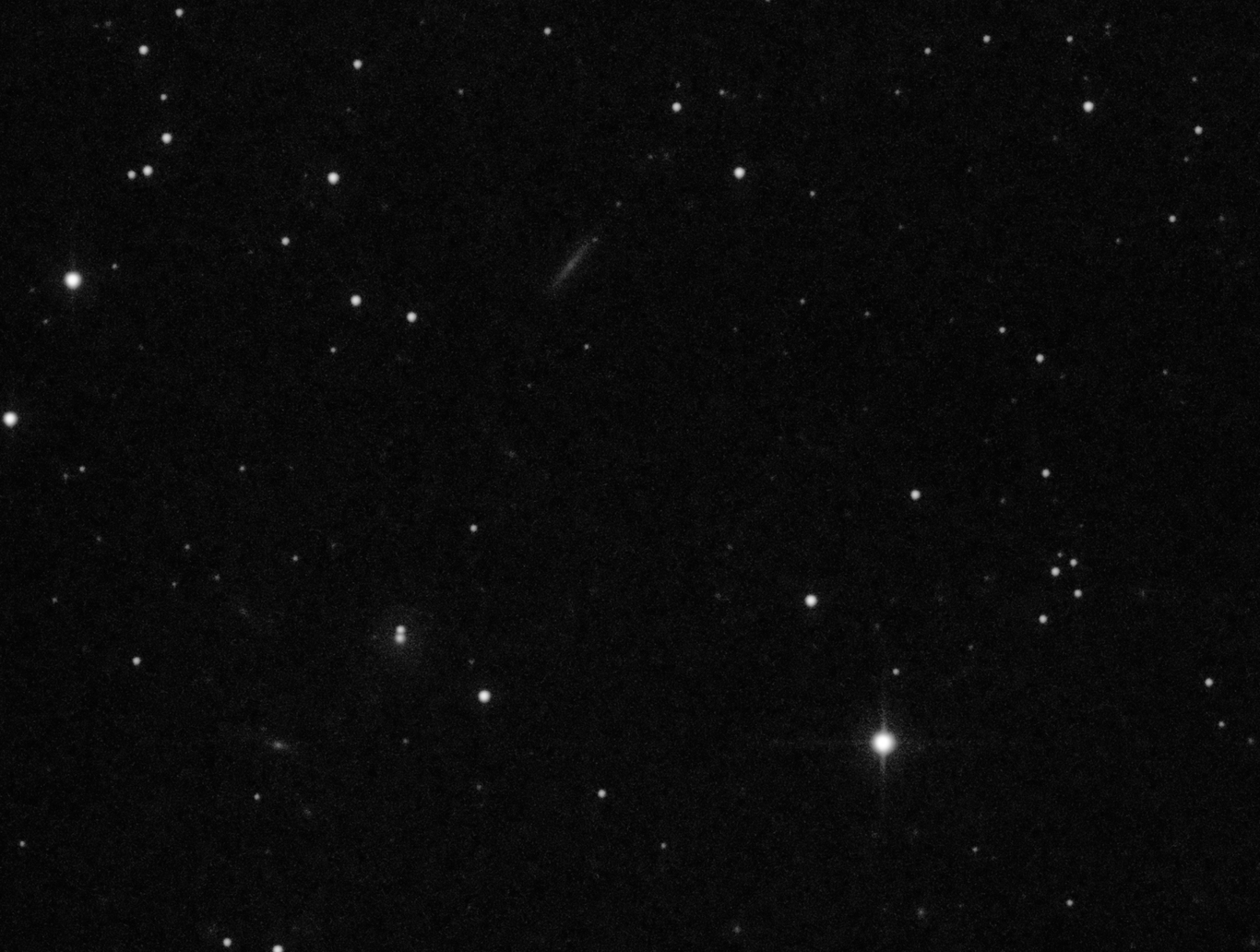
Target Details
A quasar (also known as a QSO or quasi-stellar object) is an extremely luminous
active galactic nucleus (AGN). It has been theorized that most large galaxies contain a supermassive central black hole with mass ranging from millions to billions of times the mass of our Sun. In quasars and other types of AGN, the black hole is surrounded by a gaseous accretion disk. As gas falls toward the black hole, energy is released in the form of electromagnetic radiation, which can be observed across the electromagnetic spectrum. The power radiated by quasars is enormous: the most powerful quasars have luminosities thousands of times greater than a galaxy such as the Milky Way.
In this image I have captured Quasar 6C 113337+702604, also known as MRK 180. The image also features two distant galaxies, UGC 06580 & LEDA 2734550. I have note been able to find out any detailed information on these galaxies, the main thing I would like to know is their distance from Earth.
Capture Details
Data captured 1st, 11th, 17th & 18th November, 2018.
42x 3 minute exposures with Lum filter.
Total Exposure 2.1 hours.
I did capture RGB data but it suffered very badly from light pollution so I chose to exclude it from the final image.
Equipment Details
Skywatcher Quattro 200 CF
NEQ6 Pro
Atik 428EX Mono
Skywatcher ST-80
QHY5L-II
Processing Details
This image was processed in Pixinsight & Lightroom.
Calibration and Registration using Batch PreProcessing script.
Dynamic Crop - Cropped to remove any black edges.
Automatic Background Extraction - Applied to remove background gradients.
Multiscale Linear Transform - Noise reduction.
Histrogram Transformation - To stretch the image and bring out the data.
Curves Transformation - To increase contrast.
Export as JPEG and import into Lightroom.
Decrease shadows (-100)
Export final JPEG for upload.
